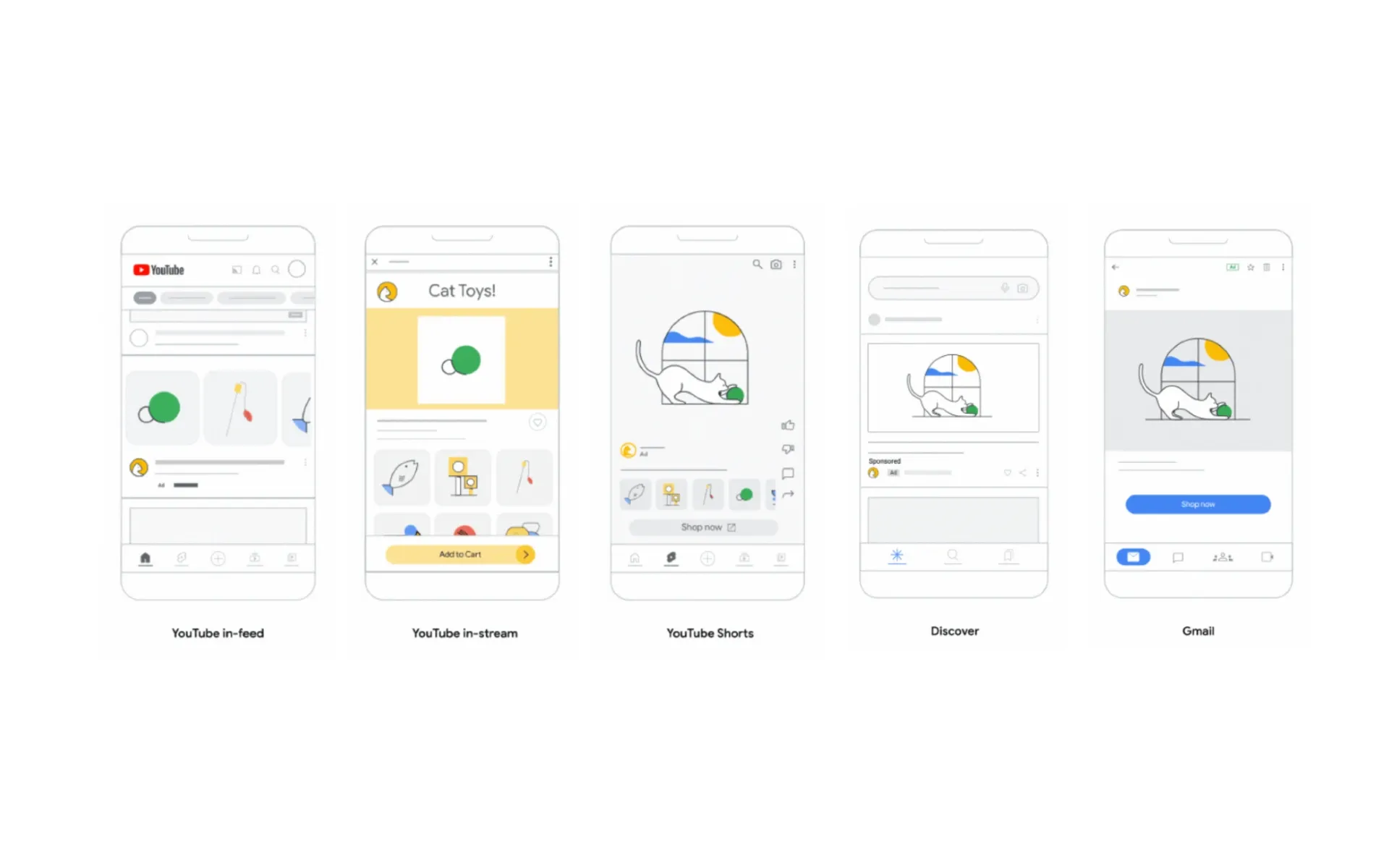Demand Gen Ad Specs
Explore the technical specifications for Demand Gen campaigns, covering image, video, and text requirements for effective ads.

Demand Gen campaigns, Google's approach to visual advertising across YouTube, Discover, and Gmail, require advertisers to adhere to specific technical specifications to ensure optimal performance. These specs cover various asset types including images, videos, text elements, and carousel ads. Understanding and following these requirements is crucial for creating effective campaigns that resonate with audiences across Google's visual platforms.
Image Specifications
Demand Gen campaigns support multiple image formats to accommodate different placements and aspect ratios. The key image specs include:
- Landscape images: 1.91:1 aspect ratio
- Square images: 1:1 aspect ratio
- Portrait images: 4:5 aspect ratio
- Logo images: 1:1 aspect ratio
Advertisers should provide images in these formats to ensure proper display across various devices and placements. The recommended file types for images are JPG, PNG, or static GIF, with a maximum file size of 5120KB. For optimal quality, images should be at least 600x314 pixels for landscape, 300x300 pixels for square, and 240x300 pixels for portrait orientations.
Video Specifications
Video assets play a crucial role in Demand Gen campaigns, especially on YouTube. The video specs include:
- Landscape videos: 16:9 aspect ratio
- Square videos: 1:1 aspect ratio
- Vertical videos: 9:16 aspect ratio (particularly important for Shorts ads)
Videos should be uploaded in MP4 format with H.264 compression. The maximum file size for videos is 256GB or 12 hours, whichever is less. For optimal performance, Google recommends videos be at least 720p resolution. On YouTube, videos can be as short as 6 seconds, while the maximum length depends on the specific ad format being used.
Text Elements
Demand Gen campaigns utilize various text elements to complement visual assets:
- Headlines: Up to 30 characters
- Long headlines: Up to 90 characters
- Descriptions: Up to 90 characters
- Call to Action (CTA): Predefined options provided by Google
- Business name: Up to 25 characters
- Final URL: The landing page where users will be directed after clicking the ad
Advertisers should craft concise, compelling text that aligns with their visual assets and campaign objectives. It's important to note that not all text elements will be displayed in every ad placement, so each element should be able to stand on its own.
Carousel Ad Specifications
Carousel ads, which allow advertisers to showcase multiple images or videos in a single ad unit, have their own set of specifications:
- Number of cards: 2-10 per carousel
- Image specs: Same as single image ads (landscape, square, portrait)
- Video specs: Same as single video ads
- Headlines: Up to 40 characters per card
- Descriptions: Up to 40 characters per card
Each card in a carousel can have its own headline, description, and destination URL, allowing for more detailed storytelling or product showcasing.
Product Feed Specifications
For advertisers using product feeds in their Demand Gen campaigns, additional specifications apply:
- Product title: Up to 150 characters
- Product description: Up to 5000 characters
- Product image: At least 300x300 pixels, with a maximum file size of 10MB
- Price: Must be accurate and include currency
- Availability status: In stock, out of stock, or preorder
Product feeds must be regularly updated to ensure accuracy and relevance.
Performance Considerations
While meeting the basic specifications is crucial, Google also provides recommendations for optimal performance:
- Image quality: Use high-resolution images with minimal text overlay
- Video length: While longer videos are supported, shorter videos (15-30 seconds) often perform better
- Text relevance: Ensure headlines and descriptions are relevant to the visual content and target audience
- Call to Action: Use clear, action-oriented CTAs that align with campaign objectives
- Brand consistency: Maintain consistent branding across all assets
Responsive Design
Given the variety of placements and devices where Demand Gen ads can appear, it's crucial to design assets with responsiveness in mind. This means creating visual elements that can adapt to different screen sizes and orientations without losing their impact or legibility.
Accessibility Considerations
While not strictly part of the technical specs, Google encourages advertisers to consider accessibility in their Demand Gen campaigns. This includes using alt text for images, providing captions for videos, and ensuring sufficient color contrast in visual elements.
Testing and Optimization
Google recommends uploading multiple variations of each asset type to allow its AI systems to optimize performance. This might include different image orientations, video lengths, or text variations. The system will then determine which combinations perform best for different audiences and placements.
Compliance and Policies
In addition to technical specifications, all Demand Gen assets must comply with Google's advertising policies. This includes guidelines on prohibited content, restricted content, and editorial standards. Advertisers should familiarize themselves with these policies to ensure their campaigns are approved and can run effectively.
Future Considerations
As with all digital advertising platforms, the specifications for Demand Gen campaigns may evolve over time. Google regularly updates its ad formats and capabilities to keep pace with changing user behaviors and technological advancements. Advertisers should stay informed about any updates to ensure their campaigns remain optimized for the latest requirements.
Key points about Demand Gen specs
Supports multiple image formats: landscape (1.91:1), square (1:1), portrait (4:5)
Video formats include landscape (16:9), square (1:1), and vertical (9:16)
Text elements have specific character limits (e.g., headlines up to 30 characters)
Carousel ads allow 2-10 cards with individual specs
Product feeds have additional requirements for title, description, and image quality
Responsive design is crucial for adaptability across different placements
Regular testing and optimization are recommended for best performance
All assets must comply with Google's advertising policies

